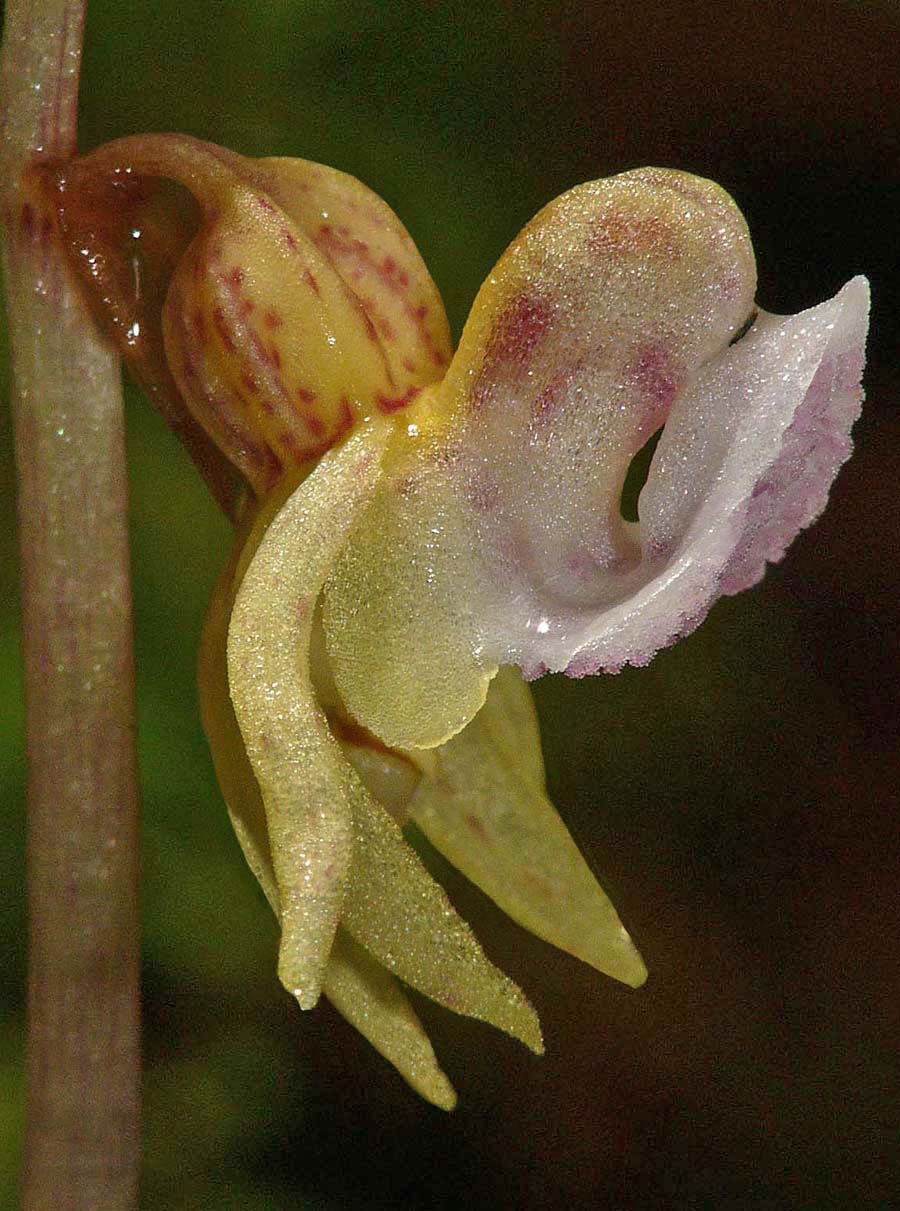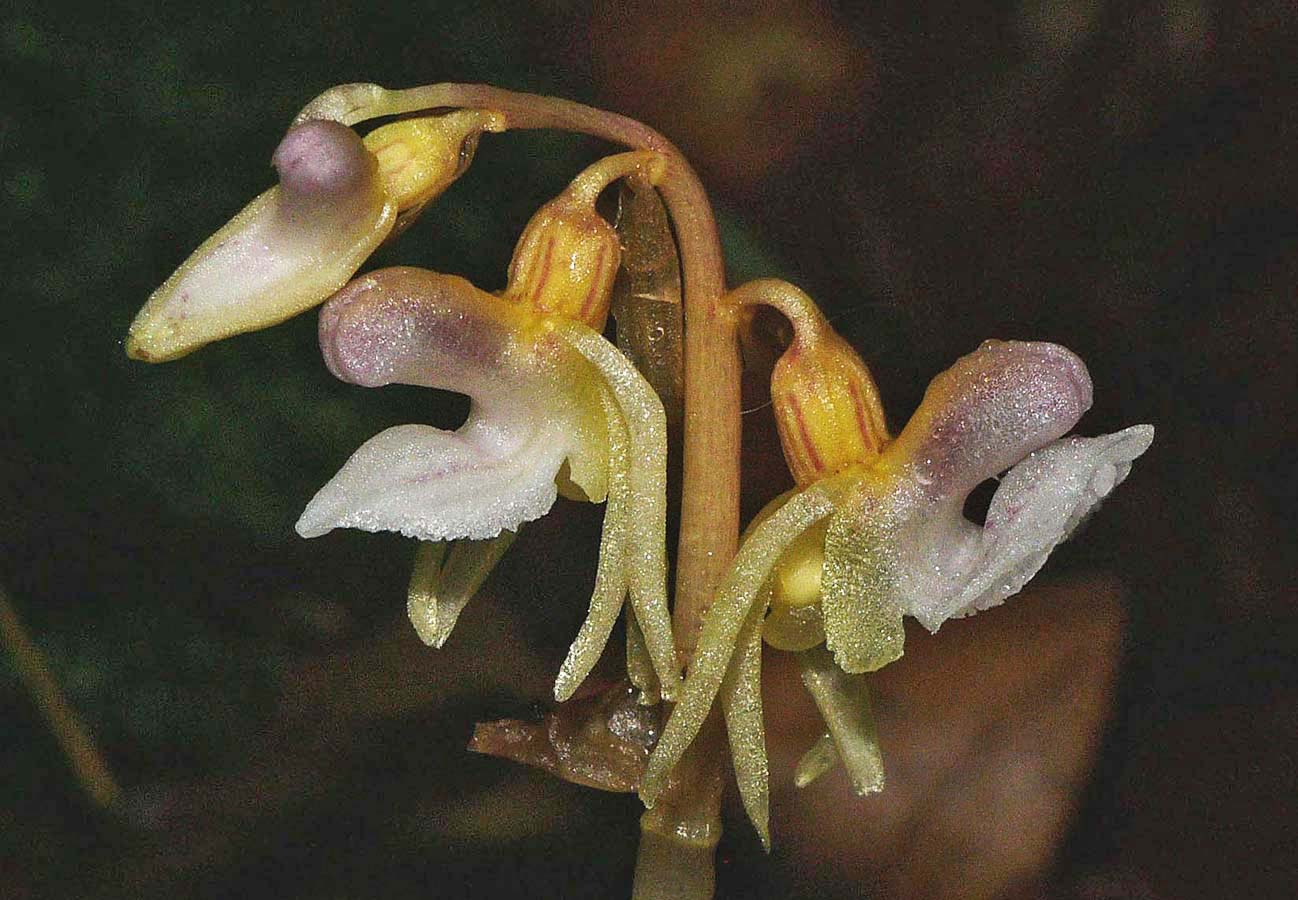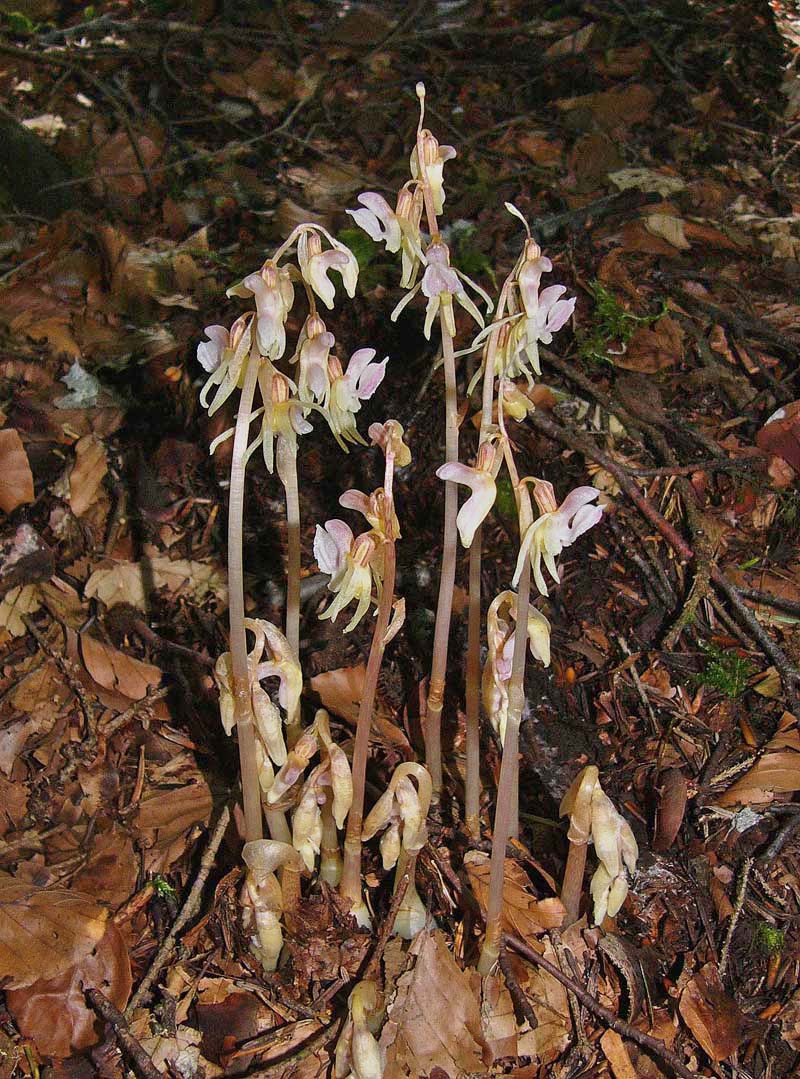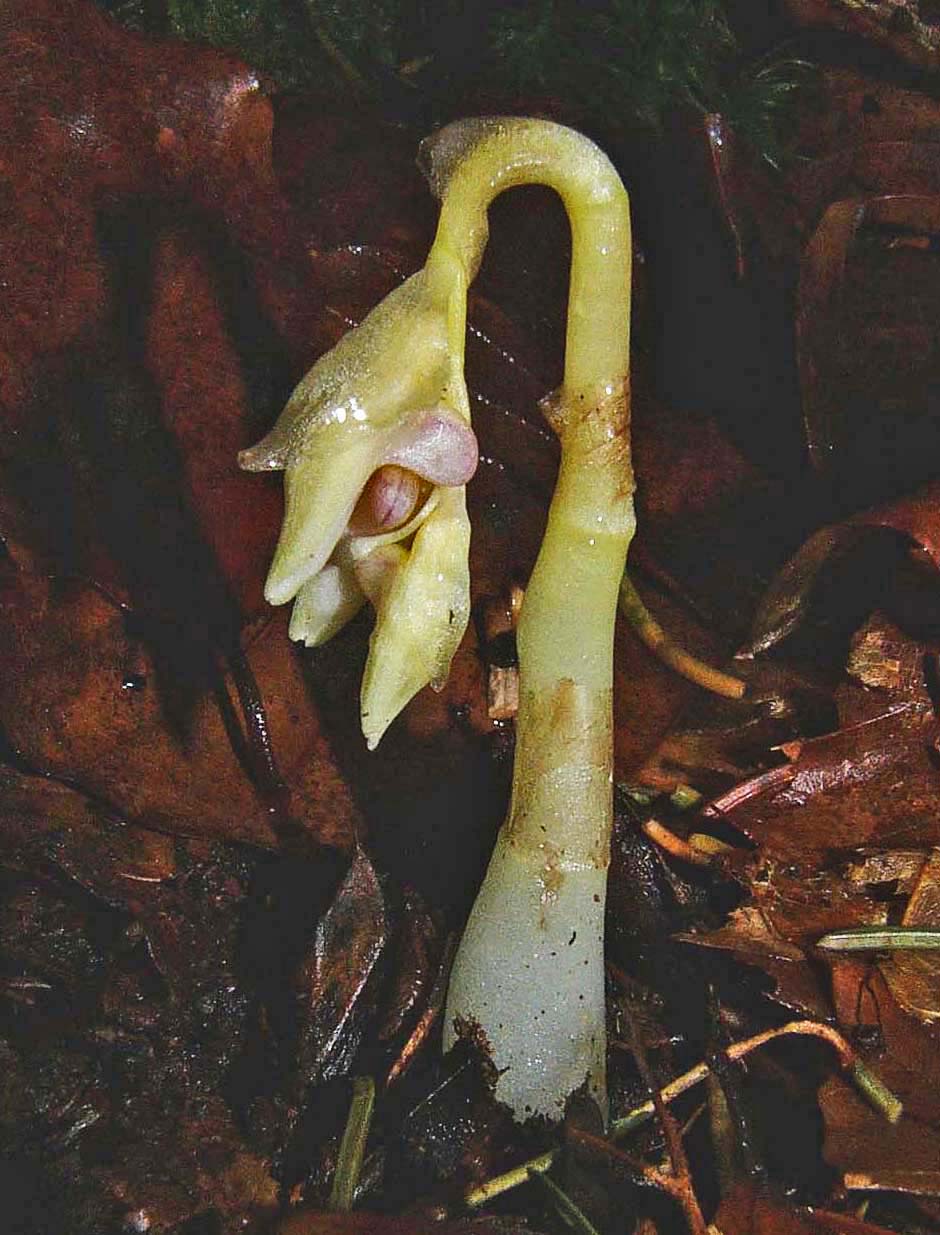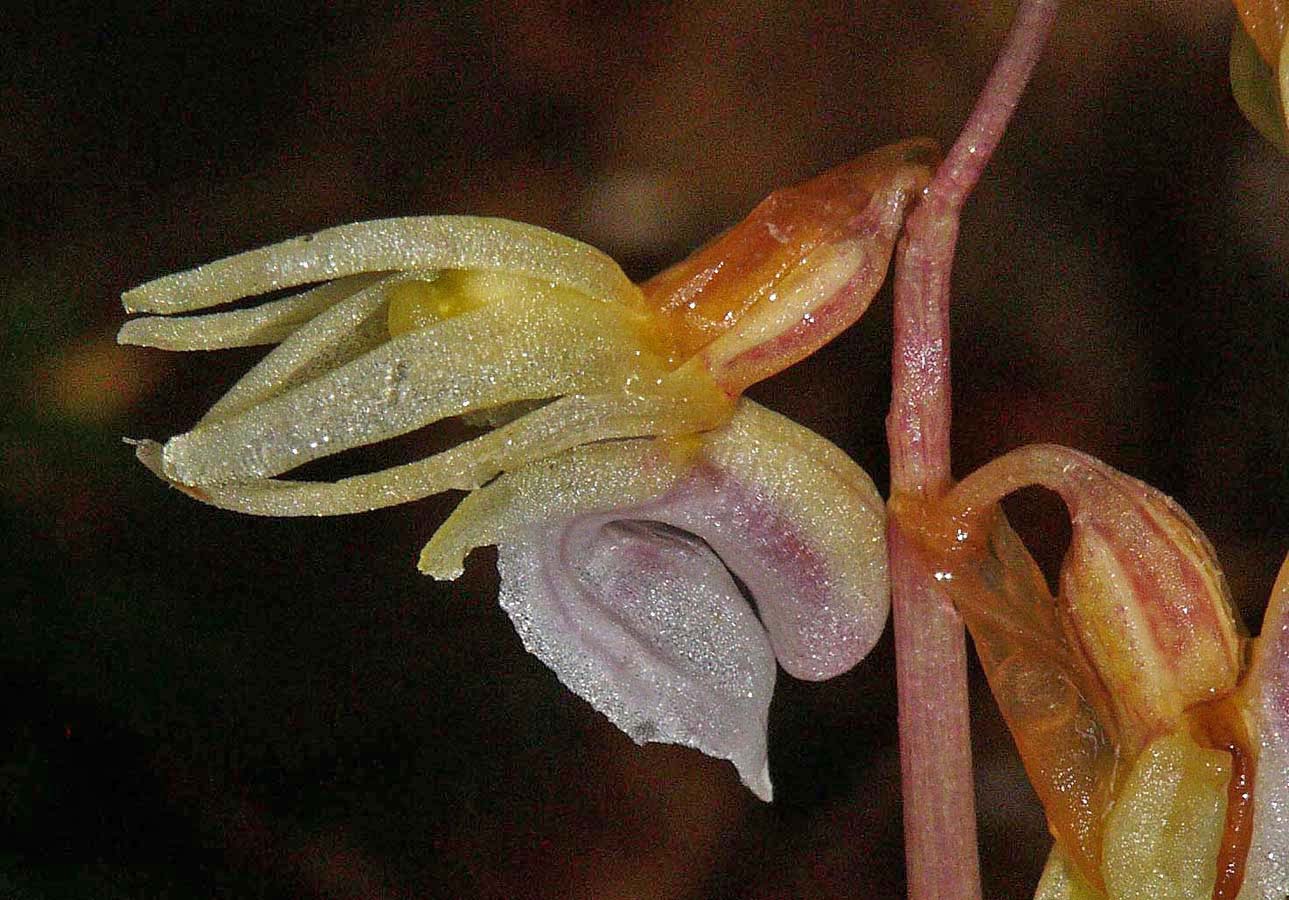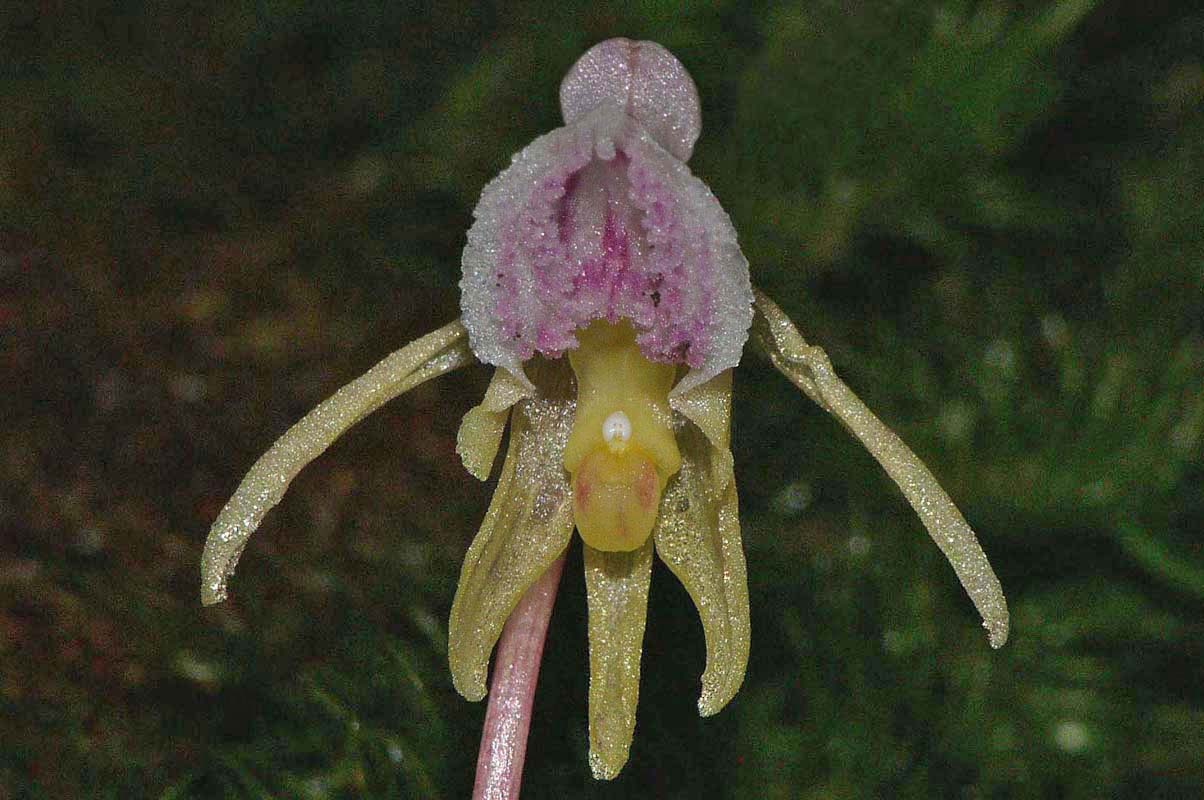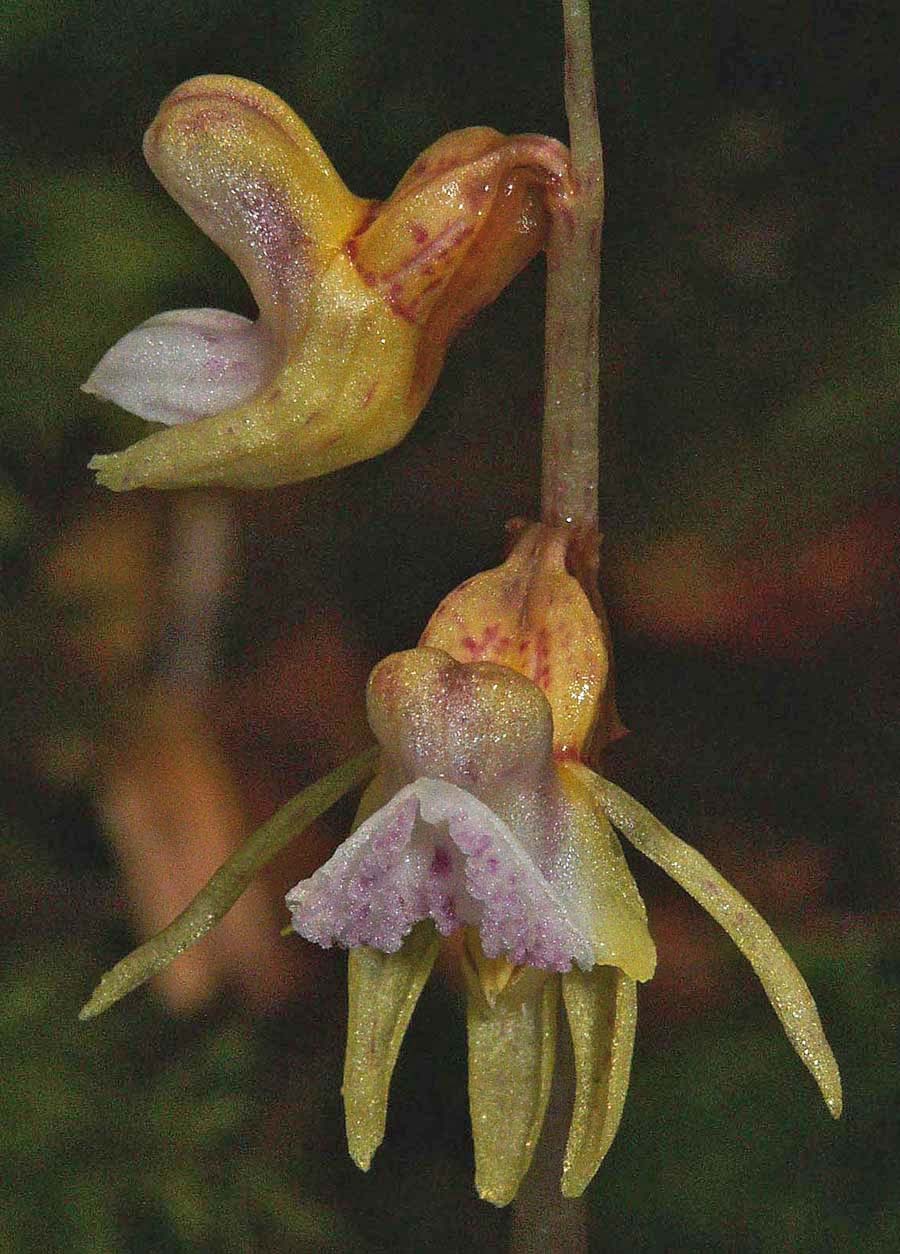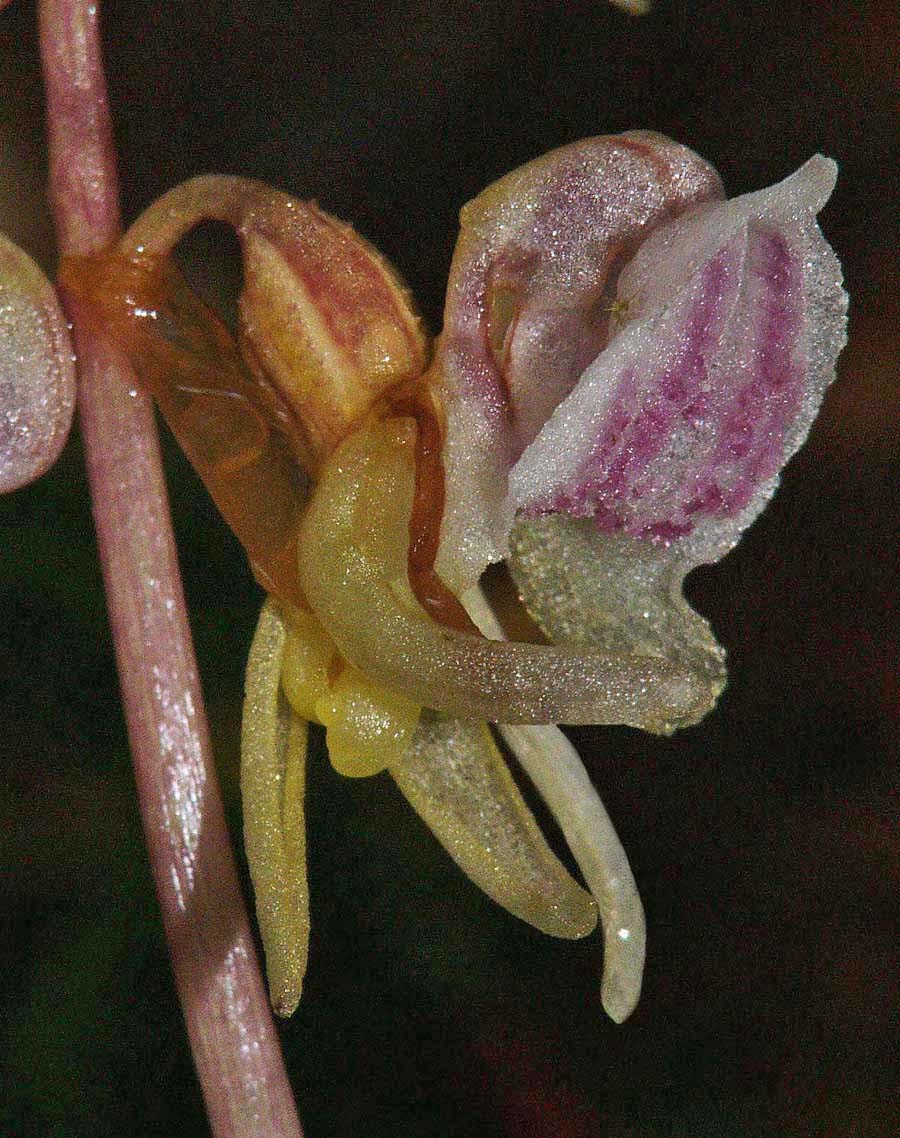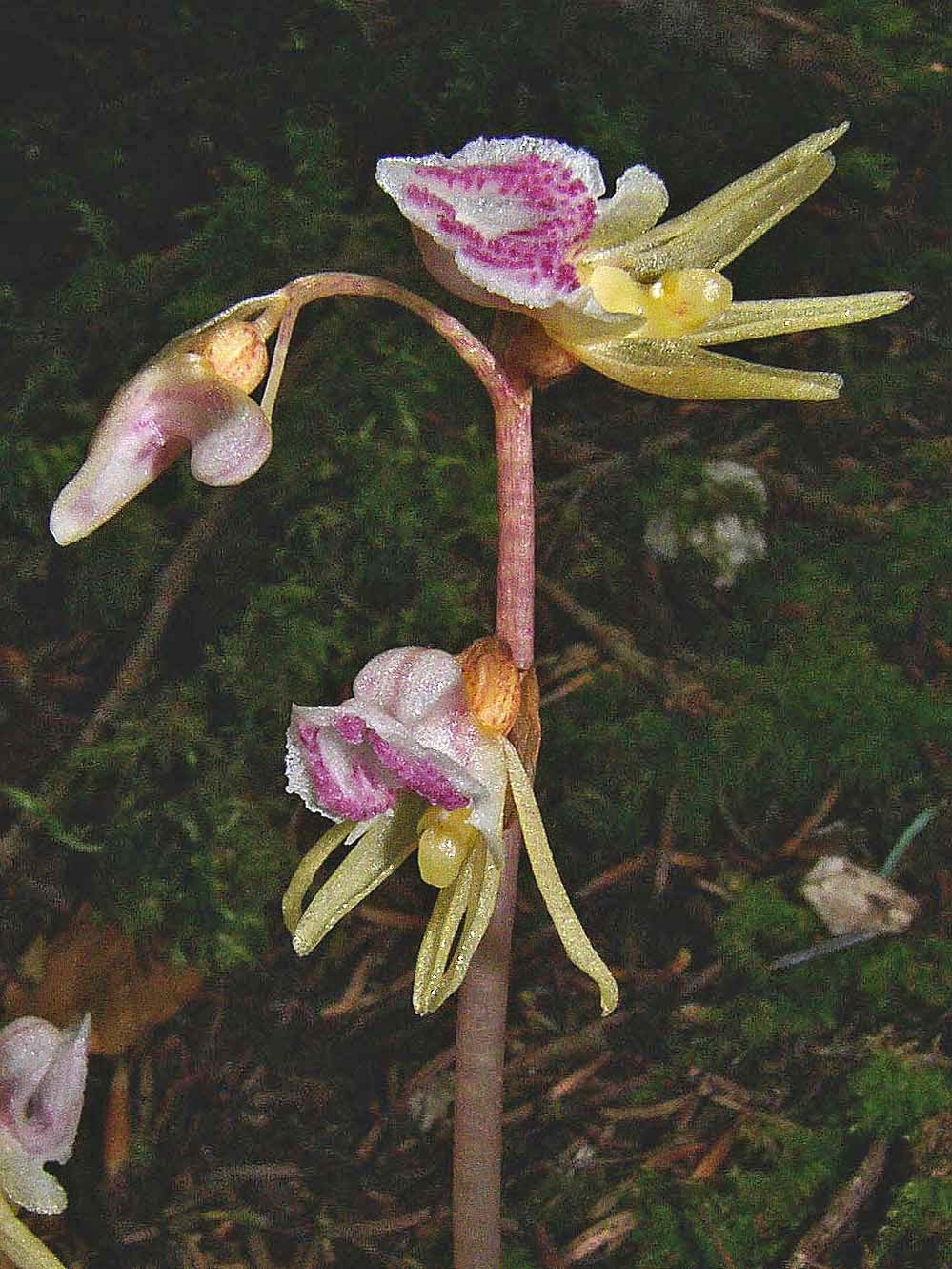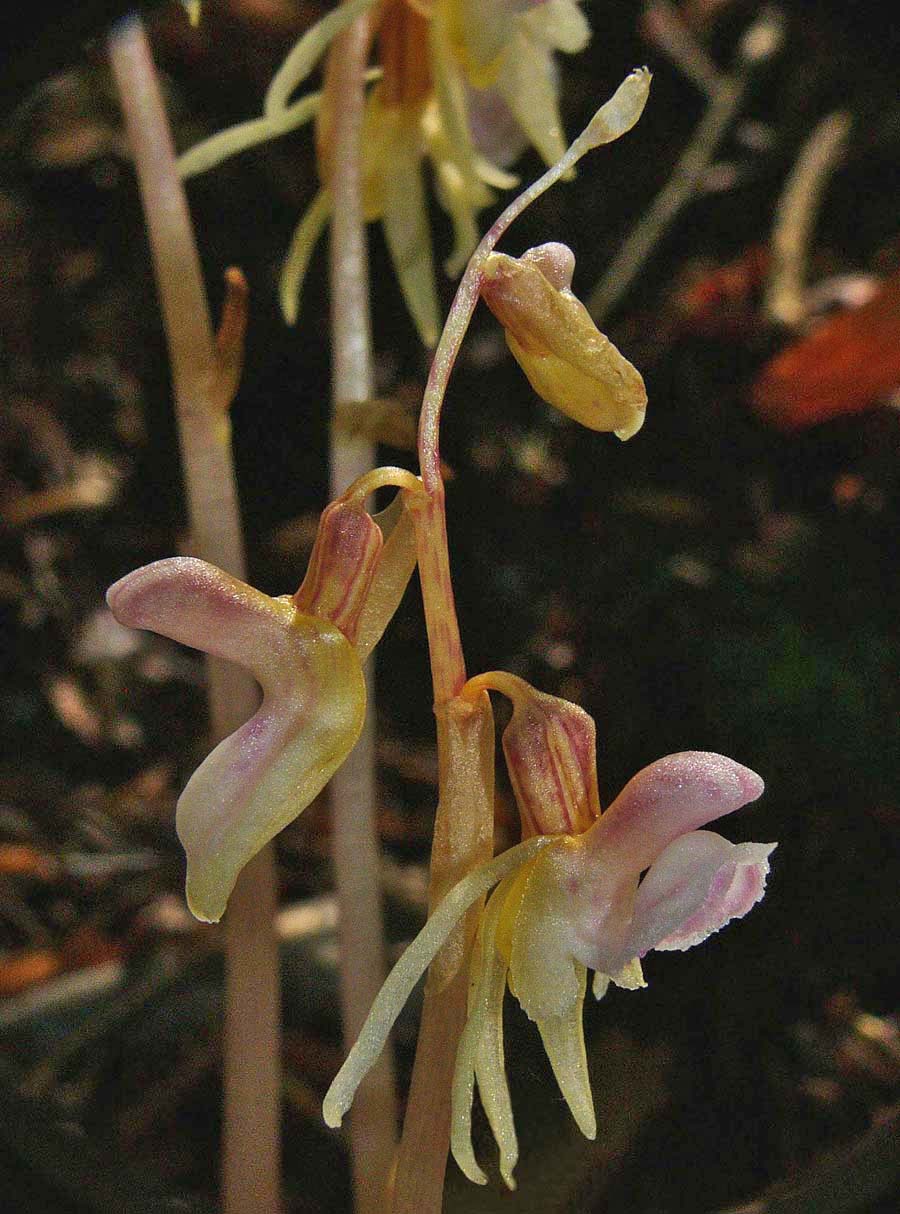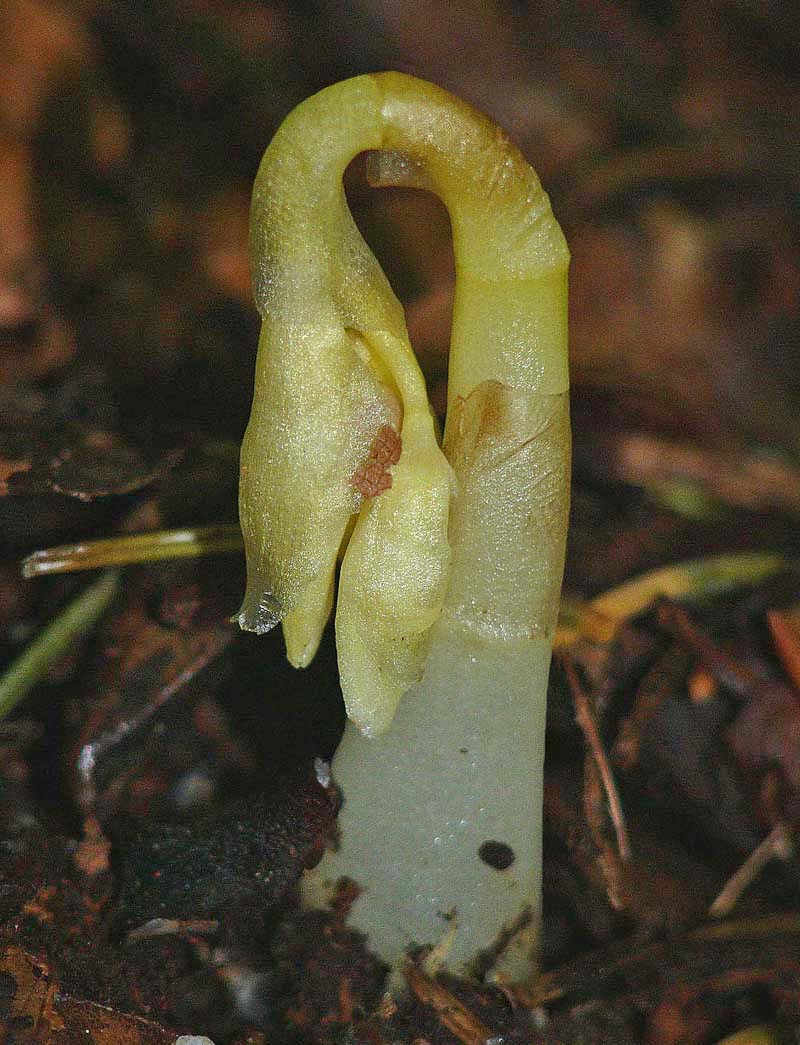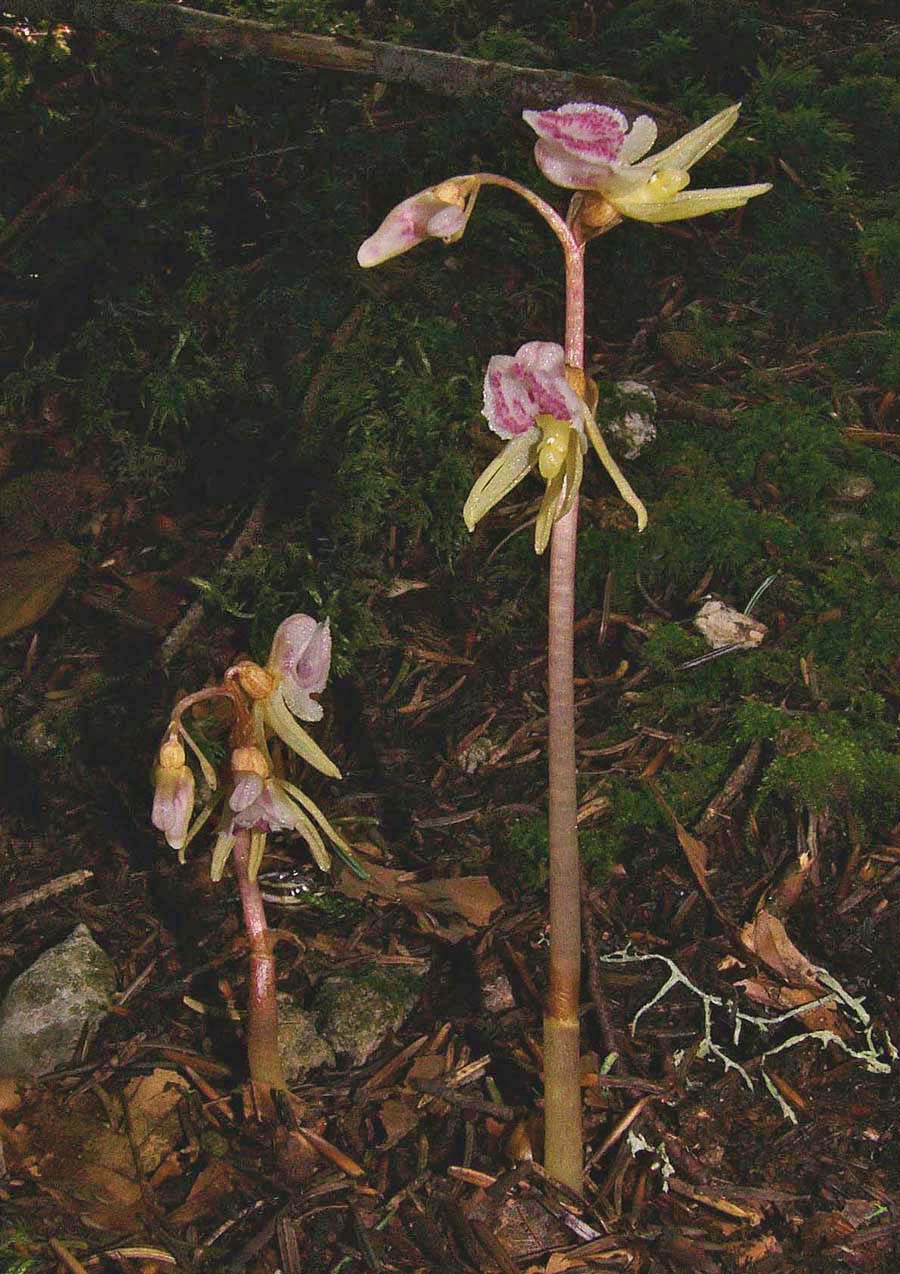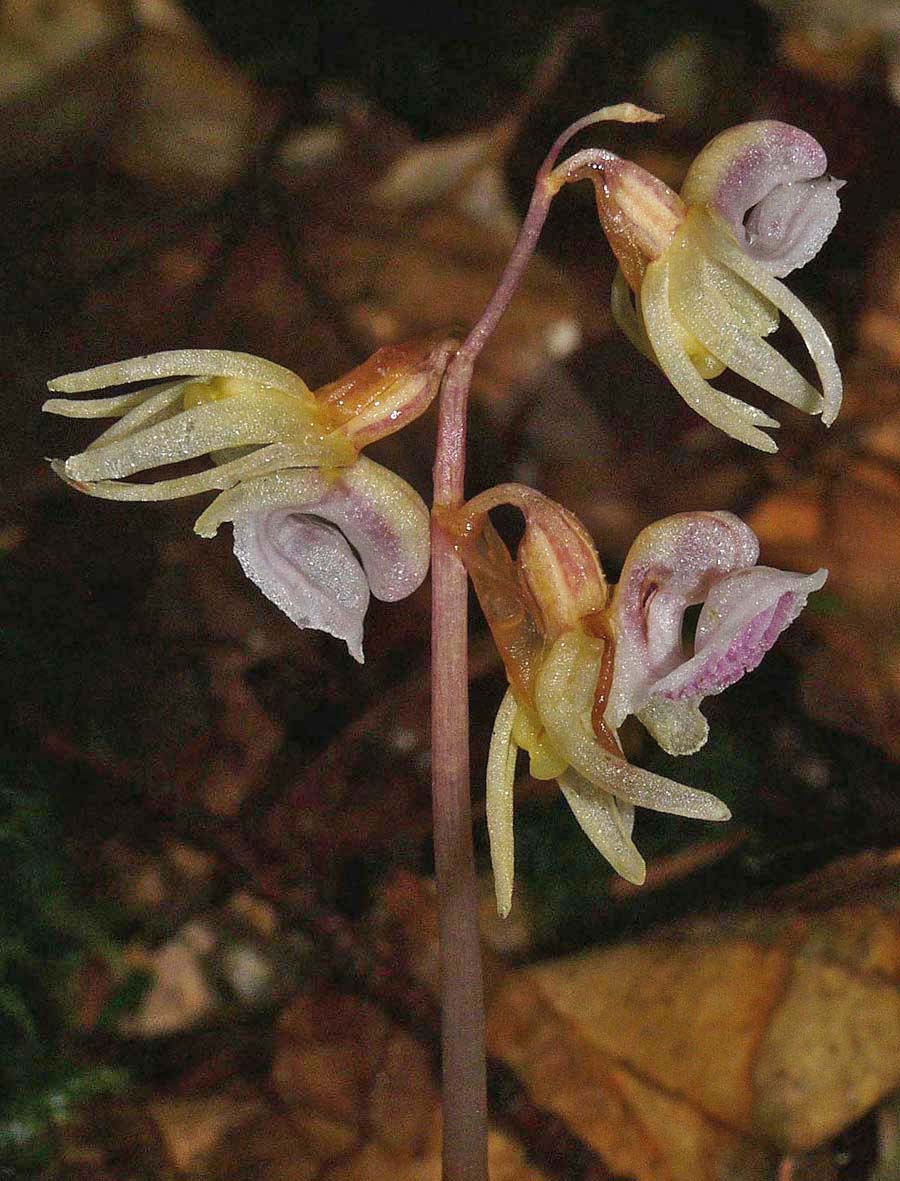This
species was first described by J. G. Gmelin from Siberia in 1792 and
its name refers to the lack of green leaves. It is commonly and
appropriately called the Ghost Orchid.
E. aphyllum is a truly saprophytic plant that inhabits cool, shady sites on alkaline or mildly acidic soils, usually amongst deep leaf litter. Its preferred location is generally dense pine or deciduous woodland where its flowers are pollinated by bees, attracted nectar which reputedly smells of fermented banana.
Its range is extensive and covers all the temperate zones of Europe and Asia as far as Japan. Although a widespread orchid it is always rare and this together with its low, spindly stature and the darkness of its favoured environment result in an orchid that's invariably difficult to find. It is always a source of great pleasure to successfully locate a colony of this deceptively beautiful and undeniably fascinating species. In Britain E. aphyllum was last recorded from its famous site near Marlow in 1986 and subsequently declared extinct in 1999. A great deal of study and hard work was then rewarded in 2009 when Mark Jannick rediscovered a single plant at a location in Herefordshire. Interestingly and notwithstanding the habitat description above, it was growing on a silty, sandy soil with a significantly high acidity level and no leaf litter. Regrettably it was subsequently re-declared extinct.
The Ghost orchid is notorious for its unreliable appearances and it can regularly disappear or flower underground for several years. The illustrations accompanying this text come from the Vercors region of Southern France, dating from the beginning of July.
E. aphyllum is a truly saprophytic plant that inhabits cool, shady sites on alkaline or mildly acidic soils, usually amongst deep leaf litter. Its preferred location is generally dense pine or deciduous woodland where its flowers are pollinated by bees, attracted nectar which reputedly smells of fermented banana.
Its range is extensive and covers all the temperate zones of Europe and Asia as far as Japan. Although a widespread orchid it is always rare and this together with its low, spindly stature and the darkness of its favoured environment result in an orchid that's invariably difficult to find. It is always a source of great pleasure to successfully locate a colony of this deceptively beautiful and undeniably fascinating species. In Britain E. aphyllum was last recorded from its famous site near Marlow in 1986 and subsequently declared extinct in 1999. A great deal of study and hard work was then rewarded in 2009 when Mark Jannick rediscovered a single plant at a location in Herefordshire. Interestingly and notwithstanding the habitat description above, it was growing on a silty, sandy soil with a significantly high acidity level and no leaf litter. Regrettably it was subsequently re-declared extinct.
The Ghost orchid is notorious for its unreliable appearances and it can regularly disappear or flower underground for several years. The illustrations accompanying this text come from the Vercors region of Southern France, dating from the beginning of July.
